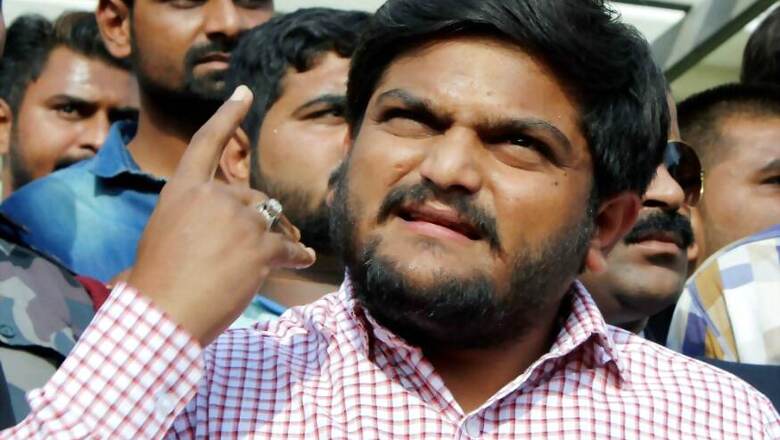
views
Beni Prasad Verma preferred to have his smoke before anything else. Even if it meant keeping top party leaders waiting for a while. Those who knew Verma made allowances for the tallest Kurmi leader in the Awadh region.
And so it happened that in the winter of 2011, Rahul Gandhi was touring Uttar Pradesh ahead of state assembly polls. Mayawati was in power. The Samajwadi Party had suffered a setback in the general election. The Congress had romped home with an impressive 20-plus tally from the state in the 2009 Lok Sabha polls to win another term at Centre.
Ahead of an election meeting in central UP, Rahul stopped the convoy and sought to know where Verma was?
Word reached the MP from Gonda who was also a minister in the Manmohan Singh government. Verma was enjoying a quiet smoke in a car away from the UP Congress’s troupe led by Rita Bahuguna Joshi (now in BJP).
“Rahul ji waited for me. And then we moved ahead to our next destination,” Verma, a raconteur par excellence, who passed away this year, told this reporter many years ago during an interaction at his home on Delhi’s Kushak Road.
The scenes that awaited Verma and others at the meeting were reported by papers the next day. We will come to that a little later.
Verma’s induction into the Congress just ahead of the 2009 Lok Sabha polls had helped the party win six seats in areas where he held sway in which the backward Kurmi community had pockets of influence: Gonda, Barabanki, Bahraich, Shravasti, Faizabad and Kheri.
This was the Congress’s first tryst with backward— especially Kurmi— politics. Verma, an old and trusted lieutenant of Mulayam Singh Yadav, had fallen out with the Samajwadi Party president with the rise of Amar Singh’s clout. The Congress saw an opportunity and reaped the benefits of an apparent split in the SP vote base.
The Kurmis are numerically the largest land-proprietary backward caste group after the Yadavs in UP and Bihar. And perhaps the biggest if one were to consider their spread across north, western and central India. In Bihar they have been largely aligned to the Janata Dal (United) because of Nitish Kumar.
In UP, in the absence of a pan-state leader, the community aligned itself with different political parties under the influence of the local leadership. In Awadh region, for instance, the SP had a hold over the Kurmi votes due to Verma. In the Rohilkhand region, the Kurmis are economically and socially upwardly mobile and are aligned to the BJP. Santosh Gangwar has won all but one election from Bareilly since 1989. In eastern UP and Bundelkhand, Kurmi leaders like Jang Bahadur Patel and Sone Lal Patel helped the Bahujan Samaj Party make initial inroads into the community in the early 1990s.
The Kurmis are a decisive vote bank in pockets of the Chota Nagpur Plateau in Jharkhand. Outside Uttar Pradesh, the Kurmis go by various other caste names: the Kunbis in Maharashtra, Patidar or Kurmis in Madhya Pradesh and Chhattisgarh. The Patidars or Patels of Gujarat, however, are politically the most organised and influential.
For the first four decades after Independence, the Congress in north, west and central India sought to build its social coalitions by stitching together an alliance between the upper caste and the most marginalised communities like Dalits, tribals and Muslims. This mobilisation was aimed to polarise and pit mid-segment land-owning proprietary castes like Jats, Yadavs and Kurmis against the upper and lower castes. In the process, the Congress managed to harvest a large section of the most-backward caste dependent on land-owning backward communities for sustenance.
In the south, though, the Congress post-Independence was more accommodating of middle-segment agrarian communities for political mobilisation. The party’s investment on political leadership in the Reddy community in Andhra and Vokkaligas in Karnataka has paid dividends and helped the Congress survive in these states after fizzling out of contention in UP and Bihar.
The lack of any support base among OBC communities proved fatal for the Congress in the Hindi heartland. Rajasthan is an exception, where the party could manage to survive due to a varied socio-political landscape where leadership in mid-segment castes among Jats and OBCs have lent the necessary heft to the party to remain in contention.
The Congress’s Kurmi experiment in the past one decade is a paradigm shift from the party’s traditional strategies and ways to move away from its means and methods to gain political dominance in many states. And it seems to have paid rich dividends.
The first MP to defect from the BJP to Congress during Prime Minister Narendra Modi’s first innings was a Kunbi from Maharashtra. The community has a strong presence in Vidarbha. Nana Patole first challenged Nitin Gadkari in the 2019 Lok Sabha polls. He is now the speaker of the Maharashtra assembly.
In Chhattisgarh, the Congress chose Bhupesh Baghel over TS Singh Deo as the chief minister after an emphatic victory in the last assembly polls. Baghel comes from the Kurmi community which is a decisive voter in the rice-bowl in central Chhattisgarh— sandwiched between the tribal-dominated Bastar division in the south and Sarguja forests in the north.
In Gujarat, too, the Congress chose to nominate a young Patidar representative in Paresh Danani as leader of opposition in the assembly after a closely fought election in 2017. And now Hardik Patel has been appointed the state working president.
Patidars have been the most influential political community in Gujarat since Independence. The caste mobilisation started more than a century back during British India when one Kunvarjibhai V Mehta, a Leuva Patel from south Gujarat, established Patidar Yuvak Mandal in 1908, publishing "caste journals, holding caste meetings and founding caste hostels" for students of the community. A meeting of the All India Kurmi Mahasabha was held in Ahmedabad in 1913. For some time around this period there was a concerted attempt to bring other agrarian communities like Marathas from Maharashtra, Patels from Gujarat, the Reddy clan from Andhra and Vokkaligas from Karnataka on one platform. The Patidar Yuvak Mandal was renamed Vallabh Seva Mandal in 1962.
The Patidar dominance in Gujarat polity was challenged by Madhavsinh Solanki in the early 1980s when his Kshatriya-Harijan-Aadivasi-Muslim (KHAM) combination won more than 150 seats in the 183-member assembly. A record which stands intact till date.
The Patidars of Gujarat used the Bharatiya Janata Party as a political vehicle to reclaim their dominant position in the state politics. When the BJP came to power, building a larger social coalition under the pan-community Hindu umbrella, the chief ministership went to Keshubhai Patel. The BJP appropriated Sardar Patel to challenge Jawaharlal Nehru’s legacy.
Except for a short period under Anandiben Patel, Gujarat has had a non-Patidar CM for almost two decades. Hardik and Danani’s appointment is aimed to fill that void.
Coming back to Rahul Gandhi’s tour or UP in 2011, at a public meeting in his home town, Verma was shouted down by a section of the old Congressis. Despite repeated interventions by Rahul, the sloganeering did not stop.
A few Congress leaders present on the stage that day have moved on. Rita Joshi, then UP unit chief is now in the BJP along with her brother Vijay Bahuguna. Jagdambika Pal is now a BJP MP.
Beni Verma quit the Congress after the 2014 elections to join the SP and remained a Rajya Sabha member till his death this year.
The Congress continues to strive to find its feet in Uttar Pradesh, the state which sends 80 MPs to the Lok Sabha.


















Comments
0 comment